Summer 2011
A friend of mine is a kayak instructor and when she invited me to join
her and some friends for a kayak trip down to the Chesapeake Bay area to
do some fossil collecting I just couldnít pass it up. Iíve been kayaking
a few times in the past, but these were all in very shelter bodies of
water where wind, chop and tides donít come into play.
As it turned out, the couple that was going to join us had to cancel,
so it was just Sue and myself for this trip. I meet her at the launch
point and after making sure I at least knew how to bucket my life vest
we were off. As we rounded the jetty into the bay there was just a
slight breeze and the water surprisingly calm, perfect for a first trip.
It seemed all too soon before we had to turn around and start heading
back if we wanted to hit a couple of areas we spotted earlier. The
fossil collecting was a little on the weak side, but overall just a
great time.
I did manage a second trip this summer and plan on many more in the
future.
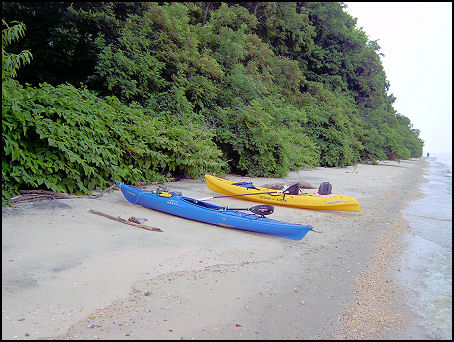
A long stretch of unsearched beach.
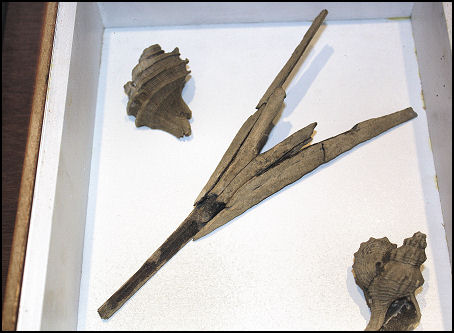
Juvenile dolphin rostrum
Tip to tip it only measures 8 inches, extremely small for a long nosed
dolphin.
The two shells, Ecphora tricostata (top left) and
Siphonalia devexa came from the same
exposure as the rostrum.
Calvert Formation (Miocene), Calvert County MD.
Left -
Two detached dolphin epiphysis
Right - Toothed whale vertebra with the epiphysis detached
A juvenile bone consists of a main shaft and two epiphysis, one at each
end.
A thin layer of cartilage attaches the epiphysis to the bone allowing
for growth. As the animal
matures these become fused to the main bone.
The other end of the same vertebra pictured above still has the
epiphysis attached. A thin line marks the joint between the epiphysis
and the vertebrae
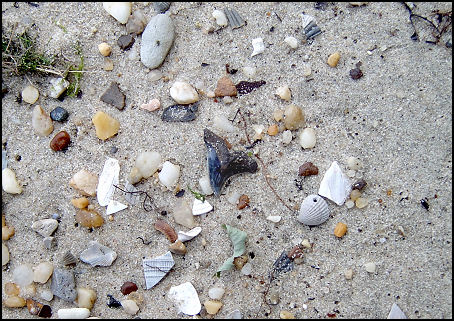
A lone hemi
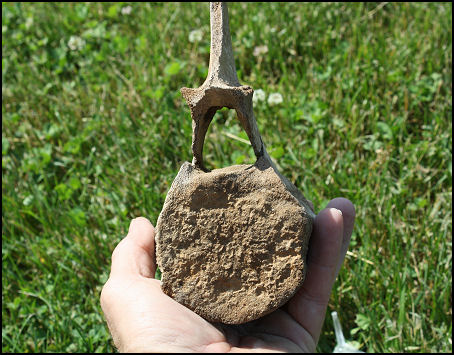
Whale vertebra
Sturgeon Scute
Sturgeons lack scales, instead there are a series of boney plates covering
their skin.
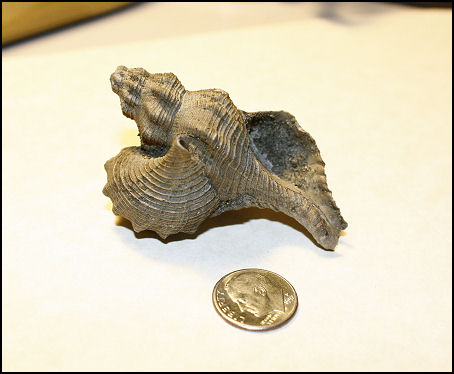
A double header, two Siphonalia devexa attached to each other.
Calvert Formation (Miocene)
An assortment of left over pictures
Left - Some of the teeth from this summer
Right - The appropriately named zebra butterfly (photo by Robert Badger)
A section of whale rib, the hole and indentations are the result of
barnacles
|